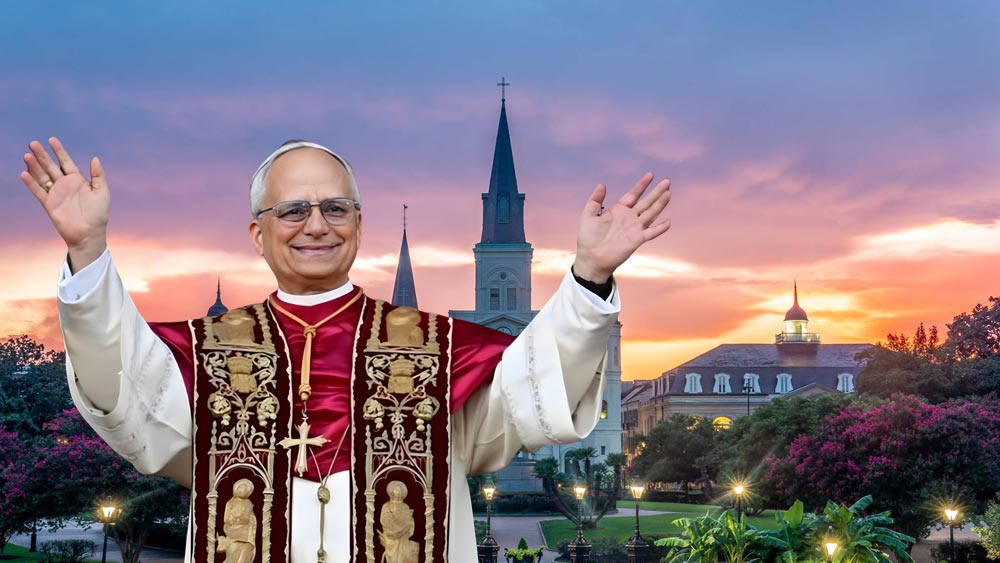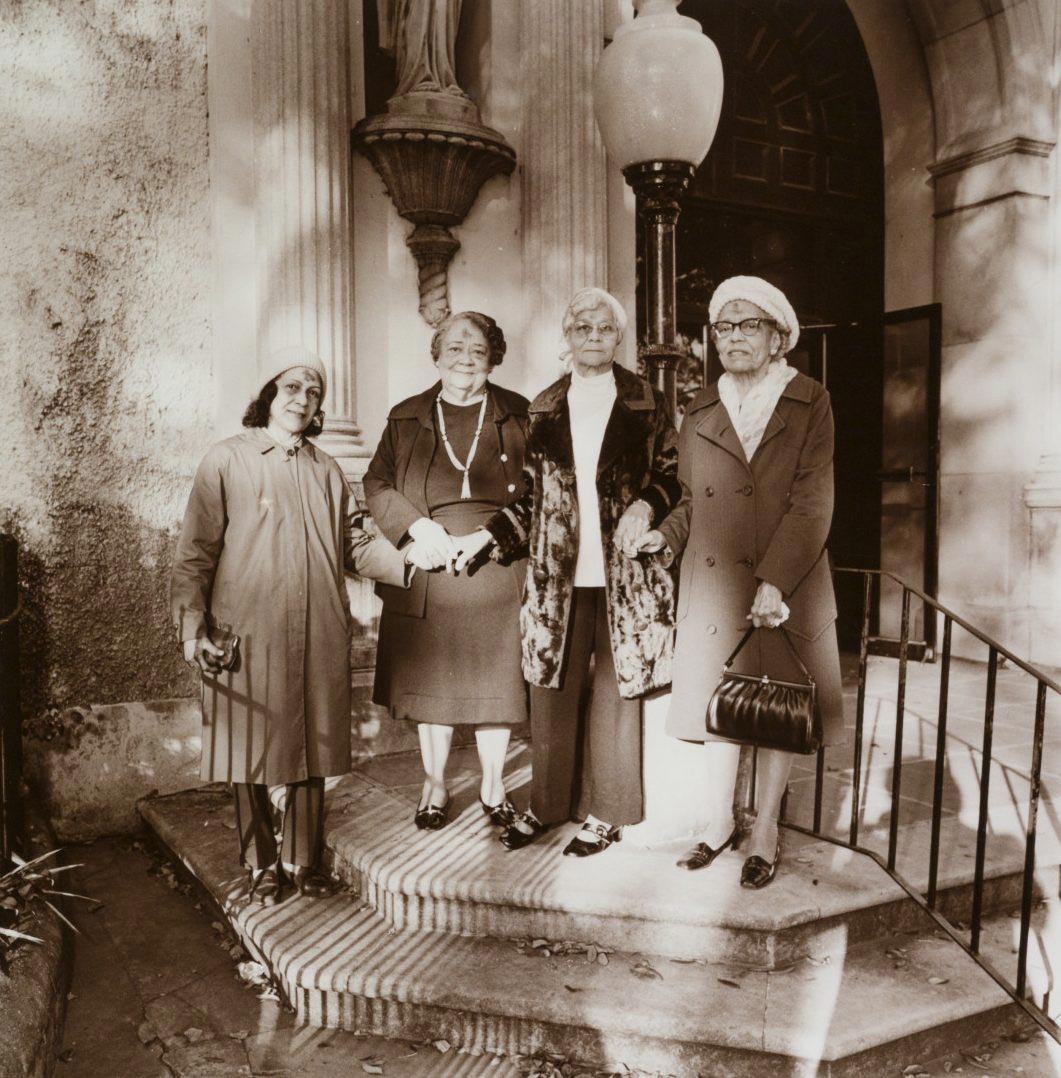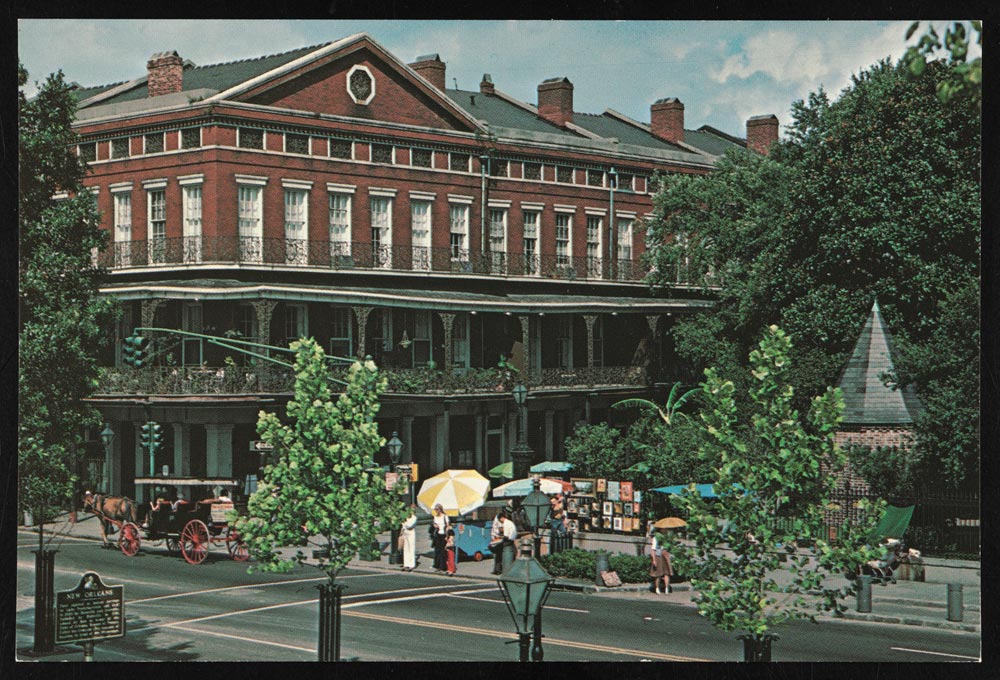May 20, 2025
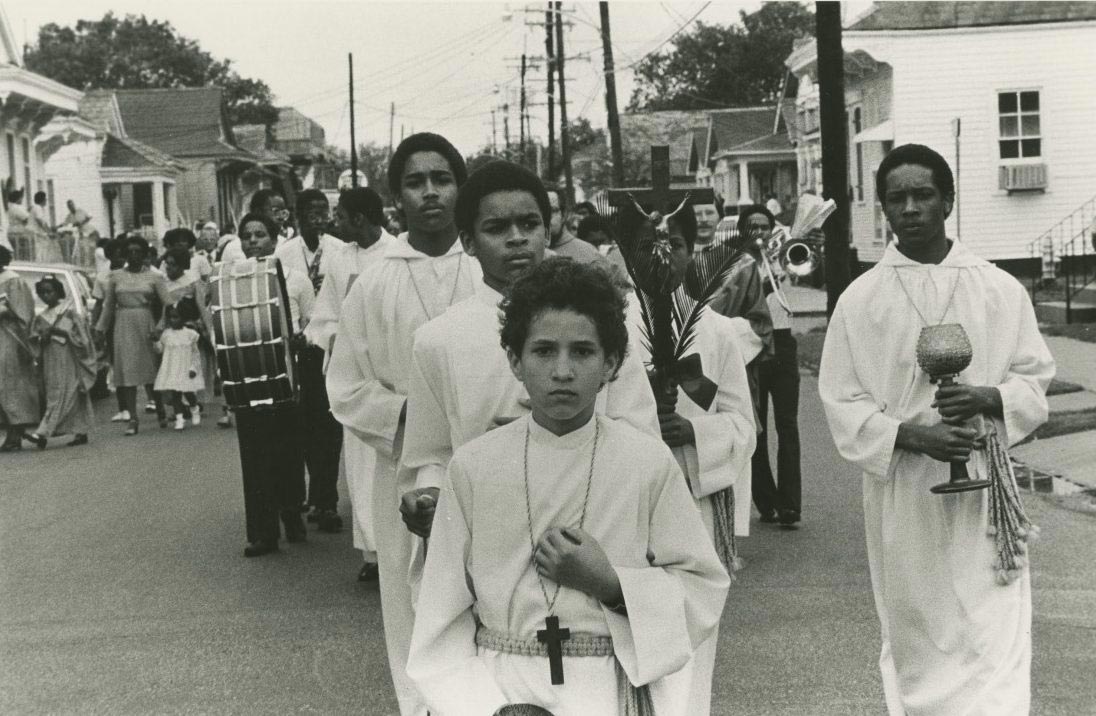
2000.30.10
Palm Sunday procession, Corpus Christi Church, 1999, photo by Christopher Porché West. HNOC, gift of Christopher Porché West, © Porché West, 2000.30.10
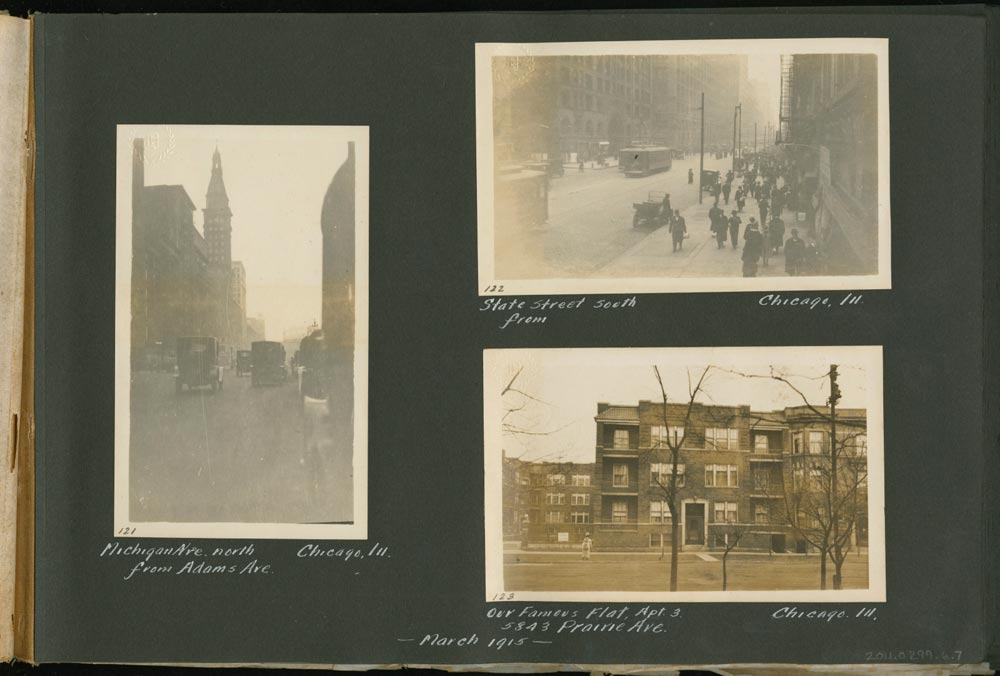
2011.0299.6.7
Scrapbook page showing scenes from Chicago in 1915, around the same time that Pope Leo XIV’s maternal grandparents arrived from New Orleans. Photographs by George Ernst Durr; HNOC, gift of Kris Pottharst, 2011.0299.6.7
Following the inspiring announcement of Robert Francis Prevost as the first American pope, Historic New Orleans Collection's genealogist Jari C. Honora made a remarkable discovery, shedding light on the pontiff's maternal grandparents who were Creoles of color from the Seventh Ward. A groundbreaking moment unfolded on May 8 as Robert Francis Prevost, now Pope Leo XIV, was elected, breaking barriers as the first American and Creole pope. Jari C. Honora made this thrilling discovery about the pope's Creole ancestry just hours after the papal announcement was made public. “Our Holy Father, Pope Leo XIV, has a profound Creole of color legacy from New Orleans on his mother’s side!” Honora exclaimed in a post on his Facebook page.
Prevost's remarkable journey began in Chicago, where he was born and raised as a white man, with a captivating Creole ancestry that may have been subtly woven into his family's narrative. When his grandparents, Joseph and Louise Martinez, embarked on a train journey from New Orleans to Chicago sometime between 1910 and 1912, they likely never envisioned that their grandson would one day become a pope, a beacon of inspiration to people around the world. That's because when Joseph and Louise boarded that train, they were known as people of color. Once they arrived in Chicago, they started a new life as whites. “They made a shift in their racial identity when they went to Chicago,” Honora says. “They were consistently listed as black, mulatto, or colored here, but once they get to Chicago it’s white, white, white, white, white. They definitely grew up considering themselves white Chicagoans and still identify as that.”
Joseph and Louise (born Louise Baquié) were raised in the vibrant Seventh Ward, a neighborhood that proudly celebrated the city's Creoles of color. Although Joseph's birthplace is unclear, with records listing both Louisiana and Port-au-Prince, Haiti, his ties to the region are strong. Louise (1868–1945) was the daughter of Ferdinand Baquié, a skilled shoemaker, and part of a family that had played a significant role in shaping Louisiana's history since colonial times.
Census records show that Joseph and Louise were listed as mulatto and occasionally as black. The couple wed in 1887 at Our Lady of the Sacred Heart Church, located on Annette Street, which was devastated by a hurricane in 1915. Joseph's childhood home, situated between North Prieur, Aubry, O'Reilly, and North Roman Streets, was torn down in the mid-20th century to clear the way for the Interstate 10 overpass.
Joseph and Louise were a dynamic duo, with Joseph working as a clerk in an office and as a cigarmaker, and Louise shining as a homemaker. By 1910, they were living their best life in the French Quarter, residing in the Upper Pontalba Building overlooking Jackson Square. They were proud parents of six children, all girls, ranging in age from 14 to one year old, and the following year they welcomed a seventh, Mildred (1912–1990), who would become the mother of the Holy Father.
Throughout the 19th century, Creoles of color boldly occupied the middle rung in the city's tripartite caste system, with whites at the top and African-American Blacks at the bottom. Creoles shared a common heritage with the free people of color of the colonial era; they held more lucrative jobs, many in skilled trades, and enjoyed greater autonomy and prospects than formerly enslaved blacks.
After the 1896 Plessy v. Ferguson ruling and Jim Crow segregation took hold, people of color initiated a massive departure giving rise to the Great Migration, a powerful emblem of the quest for equality. Between 1915 and 1960, approximately five million people migrated from the south to the west and north seeking improved prospects, with Chicago being a primary destination.
The Martinezes, Pope Leo XIV's grandparents, personified hope and renewal. Joseph's passion for his craft as a cigarmaker remained unrelenting. The family's East Cedar Street residence in the city's North Side represented a fresh beginning. Chicago provided the Martinezes with an opportunity to rebuild, and they laid the foundation for a lasting legacy. As the Martinezes and numerous individuals of color at the time broke free from the Jim Crow south's rigid constraints, they exhibited extraordinary fortitude. Today, this rekindled New Orleans connection sparks jubilation among Louisiana Catholics and Catholics of color worldwide.
Honora plans to develop an exhibit “showcasing the wonderful sacramental sources we have on the Holy Father’s ancestry. Those sacramental records, marking baptisms, confirmations, marriages and funerals are crucial.” Honora said. “We’re so fortunate that we have sacramental records here in this archdiocese for whites, free people of color and the enslaved that go back to 1718.” Honora called such records “sacred volumes,” where “you can find some of the poorest, the illiterate, immigrants, as well as the ancestors of millionaires and popes and kings. And they’re all recorded the same in these books, because first and foremost, they’re created by the Church to document the reception of the sacraments.”
“I think that a lot of New Orleanians have a much stronger connection to the Holy Father now, beyond being people of faith or people of well meaning,” Honora says. “They now consider him a homeboy and a definite Saints fan at this point. We’re definitely hoping that when Pope Leo begins his papal visits, including North America, New Orleans has to be on his itinerary. We promise that we'll have good gumbo and a nice second line for him,” Honora said.
Prevost's remarkable journey began in Chicago, where he was born and raised as a white man, with a captivating Creole ancestry that may have been subtly woven into his family's narrative. When his grandparents, Joseph and Louise Martinez, embarked on a train journey from New Orleans to Chicago sometime between 1910 and 1912, they likely never envisioned that their grandson would one day become a pope, a beacon of inspiration to people around the world. That's because when Joseph and Louise boarded that train, they were known as people of color. Once they arrived in Chicago, they started a new life as whites. “They made a shift in their racial identity when they went to Chicago,” Honora says. “They were consistently listed as black, mulatto, or colored here, but once they get to Chicago it’s white, white, white, white, white. They definitely grew up considering themselves white Chicagoans and still identify as that.”
Joseph and Louise (born Louise Baquié) were raised in the vibrant Seventh Ward, a neighborhood that proudly celebrated the city's Creoles of color. Although Joseph's birthplace is unclear, with records listing both Louisiana and Port-au-Prince, Haiti, his ties to the region are strong. Louise (1868–1945) was the daughter of Ferdinand Baquié, a skilled shoemaker, and part of a family that had played a significant role in shaping Louisiana's history since colonial times.
Census records show that Joseph and Louise were listed as mulatto and occasionally as black. The couple wed in 1887 at Our Lady of the Sacred Heart Church, located on Annette Street, which was devastated by a hurricane in 1915. Joseph's childhood home, situated between North Prieur, Aubry, O'Reilly, and North Roman Streets, was torn down in the mid-20th century to clear the way for the Interstate 10 overpass.
Joseph and Louise were a dynamic duo, with Joseph working as a clerk in an office and as a cigarmaker, and Louise shining as a homemaker. By 1910, they were living their best life in the French Quarter, residing in the Upper Pontalba Building overlooking Jackson Square. They were proud parents of six children, all girls, ranging in age from 14 to one year old, and the following year they welcomed a seventh, Mildred (1912–1990), who would become the mother of the Holy Father.
Throughout the 19th century, Creoles of color boldly occupied the middle rung in the city's tripartite caste system, with whites at the top and African-American Blacks at the bottom. Creoles shared a common heritage with the free people of color of the colonial era; they held more lucrative jobs, many in skilled trades, and enjoyed greater autonomy and prospects than formerly enslaved blacks.
After the 1896 Plessy v. Ferguson ruling and Jim Crow segregation took hold, people of color initiated a massive departure giving rise to the Great Migration, a powerful emblem of the quest for equality. Between 1915 and 1960, approximately five million people migrated from the south to the west and north seeking improved prospects, with Chicago being a primary destination.
The Martinezes, Pope Leo XIV's grandparents, personified hope and renewal. Joseph's passion for his craft as a cigarmaker remained unrelenting. The family's East Cedar Street residence in the city's North Side represented a fresh beginning. Chicago provided the Martinezes with an opportunity to rebuild, and they laid the foundation for a lasting legacy. As the Martinezes and numerous individuals of color at the time broke free from the Jim Crow south's rigid constraints, they exhibited extraordinary fortitude. Today, this rekindled New Orleans connection sparks jubilation among Louisiana Catholics and Catholics of color worldwide.
Honora plans to develop an exhibit “showcasing the wonderful sacramental sources we have on the Holy Father’s ancestry. Those sacramental records, marking baptisms, confirmations, marriages and funerals are crucial.” Honora said. “We’re so fortunate that we have sacramental records here in this archdiocese for whites, free people of color and the enslaved that go back to 1718.” Honora called such records “sacred volumes,” where “you can find some of the poorest, the illiterate, immigrants, as well as the ancestors of millionaires and popes and kings. And they’re all recorded the same in these books, because first and foremost, they’re created by the Church to document the reception of the sacraments.”
“I think that a lot of New Orleanians have a much stronger connection to the Holy Father now, beyond being people of faith or people of well meaning,” Honora says. “They now consider him a homeboy and a definite Saints fan at this point. We’re definitely hoping that when Pope Leo begins his papal visits, including North America, New Orleans has to be on his itinerary. We promise that we'll have good gumbo and a nice second line for him,” Honora said.

